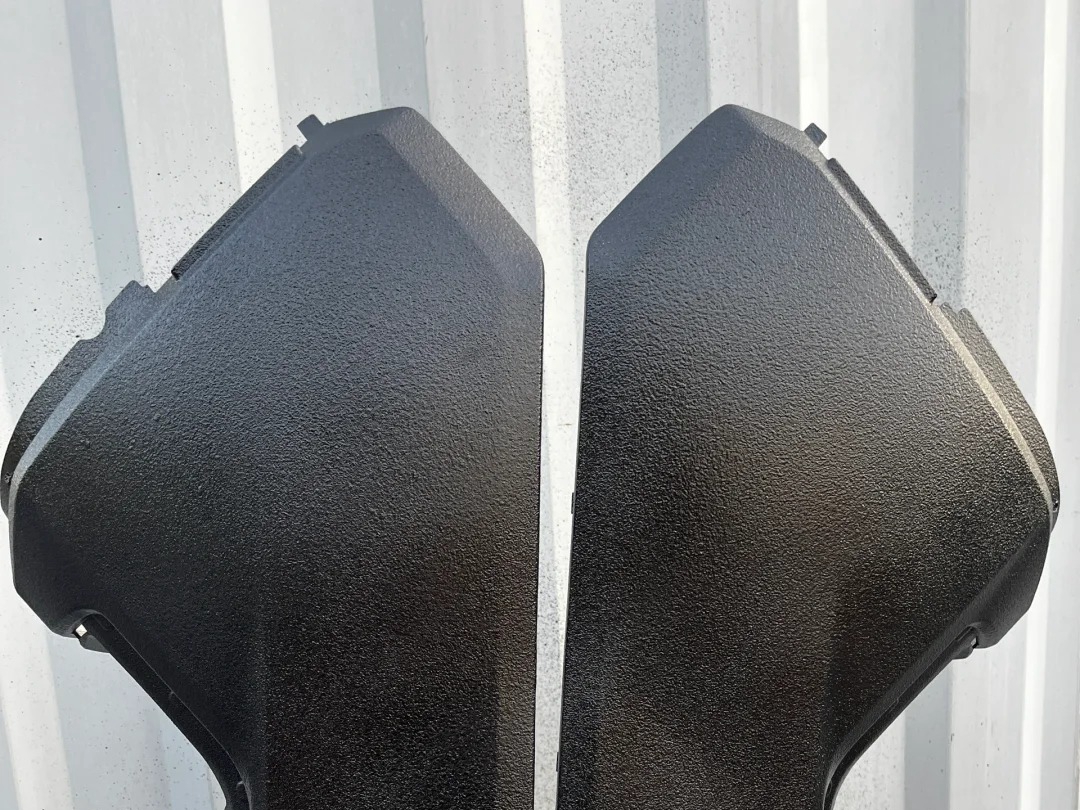Lacquer Coating: The Ultimate Solution for Enhanced Aesthetic and Protection of CNC Parts
Introduction
Lacquer coating is a sophisticated finishing technique that enhances both the aesthetic appeal and protective qualities of CNC machined parts. Applied as a liquid, lacquer dries to form a hard, durable finish that protects against moisture, chemicals, and physical abrasion while providing a high-gloss or matte appearance. This type of coating is particularly valuable for parts requiring a visually striking surface and increased durability.
Widely utilized in industries like automotive, consumer electronics, and decorative items, lacquer coatings are ideal for applications that demand both functional robustness and enhanced visual characteristics, making them essential for high-end or exposed CNC components.
Lacquer Coating Technology: Combining Durability with Visual Appeal
Scientific Principles & Industrial Standards
Definition: Lacquer is a solvent-based coating that forms a solid film when the solvent evaporates, leaving behind a layer that adheres to the part's surface. This film is resistant to environmental factors and mechanical wear.
Governing Standards:
ASTM D333: Standards for clear and pigmented lacquers.
ISO 2813: Measurement of gloss levels on lacquer coatings.
ASTM D522: Bend test for flexibility of lacquer coatings.
Process Function and Cases
Performance Dimension | Technical Parameters | Application Cases |
|---|---|---|
Surface Hardness | - Enhances scratch resistance | Automotive dashboards, luxury electronic casings |
Aesthetic Enhancement | - High-gloss to matte finishes available - Deepens color intensity | Musical instruments, custom decorative items |
Chemical Resistance | - Resistant to acids, alkalis, and solvents | Laboratory equipment, kitchenware handles |
Environmental Resistance | - Protects against UV light and moisture | Outdoor furniture, marine vehicle components |
Lacquer Coating Process Classification
Technical Specification Matrix
Lacquer Type | Key Parameters & Metrics | Advantages | Limitations |
|---|---|---|---|
Nitrocellulose Lacquer | - Fast drying, easy to apply - Application: Spray, brush | - Excellent for wood and metals - Easily repairable | - Susceptible to yellowing over time |
Acrylic Lacquer | - UV stable, water-resistant - High clarity finish | - Best for plastics and metals - Longer-lasting color retention | - Requires careful application to avoid blushing |
Catalyzed Lacquer | - Two-part formula that hardens chemically - Superior durability and hardness | - Ideal for high-wear areas - Water and chemical resistant | - Short pot life; complex application process |
Water-Based Lacquer | - Low VOC, environmentally friendly - Dries to a clear finish | - Safer for indoor use and easy cleanup - Less odor during application | - Longer drying times; less solvent resistance |
Selection Criteria & Optimization Guidelines
Nitrocellulose Lacquer
Selection Criteria: Ideal for interior furnishings and musical instruments requiring a classic finish with easy maintenance.
Optimization Guidelines:
Apply in controlled environments to prevent dust inclusion.
Utilize fast-drying solvents to enhance workflow efficiency.
Acrylic Lacquer
Selection Criteria: Best suited for automotive parts and exterior applications needing UV stability and vibrant color fidelity.
Optimization Guidelines:
Ensure surfaces are free of oils and contaminants for a flawless finish.
Adjust spray equipment for uniform application.
Catalyzed Lacquer
Selection Criteria: Recommended for kitchen cabinets, bathroom fixtures, and areas exposed to frequent cleaning or moisture.
Optimization Guidelines:
Precisely measure components to ensure proper chemical curing.
Apply in well-ventilated areas with appropriate protective gear.
Water-Based Lacquer
Selection Criteria: Perfect for children’s toys, food contact surfaces, and environmentally sensitive applications.
Optimization Guidelines:
Allow adequate drying times between coats to build a strong finish.
Use fine brushes or HVLP spray systems for best results.
Material-Coating Compatibility Chart
Substrate | Recommended Lacquer Type | Performance Gain | Industrial Validation Data |
|---|---|---|---|
Acrylic Lacquer | Enhanced weather resistance | Outdoor signage showing minimal fading over 5 years | |
Catalyzed Lacquer | Superior corrosion and scratch resistance | Tools and fixtures in high-moisture environments | |
Water-Based Lacquer | Safe, durable finish | Children's toys passing rigorous safety tests | |
Nitrocellulose Lacquer | Classic aesthetic with natural depth | Custom furniture pieces with enhanced grain appearance | |
Acrylic Lacquer | Long-lasting gloss and color protection | Kitchen appliances maintaining pristine conditions |
Comprehensive Process Control and Quality Assurance
Preparation and Quality Standards
Pre-Treatment: All parts must be thoroughly cleaned and sanded if necessary to ensure a smooth application.
Process Control: Application techniques and environmental conditions are strictly controlled to achieve the best finish.
Post-Treatment: Each coated item is inspected for uniformity, adherence, and performance characteristics.
Expert Insights and Common Inquiries
How does lacquer coating enhance the longevity and appearance of CNC machined parts?
Can lacquered surfaces withstand outdoor environmental conditions?
What are the health and safety considerations when applying lacquer coatings?
How do different substrates affect the choice of lacquer coating?
What are the cost benefits of implementing lacquer coatings in mass production?

